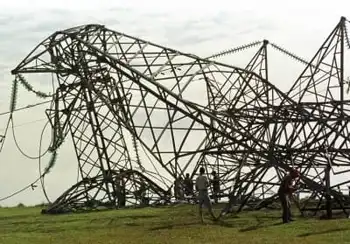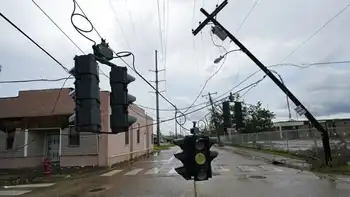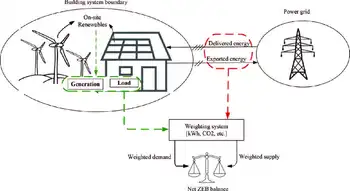Oklahoma utilities urged to diversify
OKLAHOMA CITY, OKLAHOMA - To keep power prices from rising in Oklahoma and elsewhere, electric utilities should turn to coal, nuclear and renewables to offset the increased cost of natural gas, Edison Electric Institute President Tom Kuhn told state regulators recently.
About 90 percent of all new power generation is made with natural gas, Kuhn said during a presentation to the Oklahoma Corporation Commission.
"We cannot continue to rely strictly on natural gas," he said. "We really do need diversity in the electric business."
Even if the construction of new gas-fired plants is reduced, it will not keep gas prices from skyrocketing to more than $13 per thousand cubic feet (mcf) by 2020, Kuhn said.
Natural gas prices have tripled since 1999, Kuhn said. Gas closed Tuesday at $6.65 per mcf on the New York Mercantile Exchange.
Electricity costs in Oklahoma have been protected to a certain extent from the volatility in natural gas because most of the state's power supplies are made with low-priced Wyoming coal.
As a result, residential electric rates in Oklahoma are 17 percent below the national average, Kuhn said. Rates for commercial and industrial customers in the state are 13 percent to 15 percent below the national average for each class.
Oklahoma Gas & Electric Co., the state's largest electric utility, has not raised rates since 1986, Kuhn said. And AEP-PSO, the state's second-largest power provider, has not raised its rates since 1994.
Still, the average retail power price in Oklahoma has risen over the last few years. Electricity prices for all sectors in the state are up 23 percent from 1999, according to the U.S. Department of Energy.
"They have increased recently because of fuel costs," Kuhn said.
That's why utilities should use multiple sources of fuel to produce power, he said. A diversified fuel mix would help limit consumer costs and shield them from sharp spikes in the price of natural gas.
"You are one of the few states without a nuclear plant," Kuhn said. "But if you build nuclear plants elsewhere, it will take some of the pressure off natural gas prices.
"People are turning back to coal again because they're concerned about the volatility of natural gas."
Kuhn also promoted the Bush administration's controversial "Clear Skies" legislation, which would reduce emissions of sulfur dioxides, nitrogen oxides and mercury over the next 13 years.
"We've reduced emissions in this country by 40 percent over the last 30 years," he said. "We're talking about reducing them another 70 percent between now and 2018."
Critics say the existing Clean Air Act calls for greater reductions in smokestack pollution.
The lack of transmission capacity is another major issue facing the nation's electric utilities, Kuhn said. The transmission capacity in Oklahoma, for example, is well below the state's generation capacity due to a glut of power plants recently built in the state.
"We need transmission tremendously," he said. "If you're a believer in renewables, you better be a believer in transmission capacity.
"It's one of the most difficult things to build. We don't have any federal eminent domain authority."
The Edison Electric Institute is the top trade association for the nation's shareholder-owned electric utilities.
Related News

New Power Grid “Report Card” Reveal Dangerous Vulnerabilities
WASHINGTON - The U.S. power grid just received its “grade card” from the American Society of Civil Engineers (ASCE) and it barely passed.
The overall rating of our antiquated electrical system was a D+. Major power outages in the United States have grown from 76 in 2007 to 307 in 2011, according to the latest available statistics. The major outage figures do not take into account all of the smaller outages which routinely occur due to seasonal storms.
The American Society of Civil Engineers power grid grade card rating means the energy infrastructure is in “poor to fair condition and mostly below…




